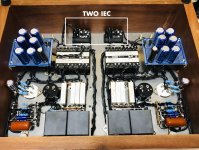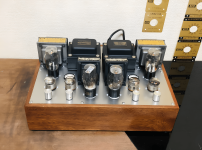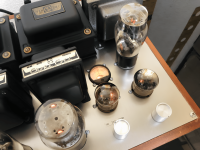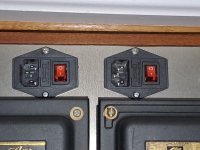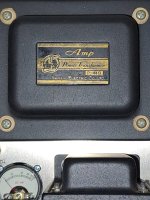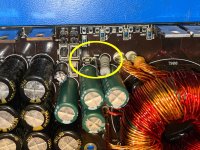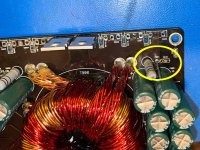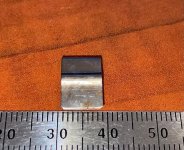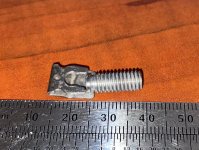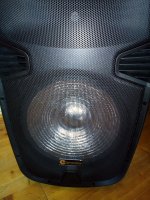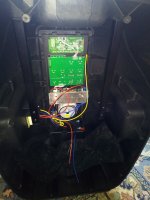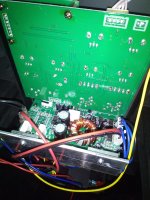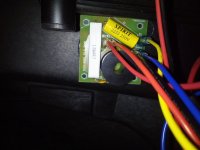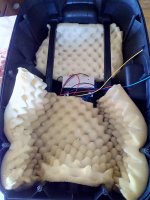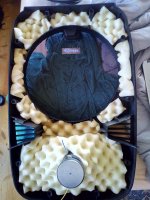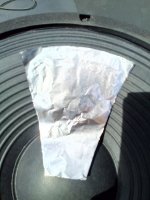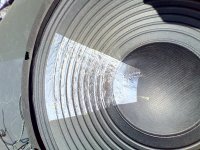The role of dominant poles and component quality in high-power electronics and audio systems is crucial. Defective or substandard semiconductors can act as unintended oscillators, generating structural noise and high sound pressure levels (SPL) with minimal energy input. This chapter explores the historical context, the evolution of semiconductor technology, the concept of break-in, and strategies to manage dominant poles and improve component quality.
In the early days, solid-state amplifiers and Class D amplifiers faced significant challenges due to low-grade semiconductors. These components often exhibited high noise levels, distortion, and reliability issues, which affected the overall performance of audio systems. Vacuum tube technology, with its linear amplification characteristics and higher tolerance to imperfections, initially maintained a competitive edge.
Early semiconductors had inconsistent material quality and manufacturing defects, leading to unpredictable performance and higher noise levels. Circuit designs did not fully leverage the potential of solid-state devices, resulting in suboptimal performance. The limitations of early semiconductors exacerbated switching noise and "Class D glare" in amplifiers. Ineffective filtering techniques further increased these issues, making it challenging to achieve clean audio output.
Advancements in semiconductor manufacturing and design have addressed many of these early challenges. Today, high-quality semiconductors are characterized by superior material properties, precise manufacturing, and optimized performance. Modern semiconductors are produced with high material consistency and manufacturing precision, reducing noise and enhancing performance. Circuit designs now fully exploit the strengths of semiconductors, incorporating advanced feedback control, better thermal management, and optimized signal paths.
High-quality low-pass filters and other advanced filtering techniques effectively suppress high-frequency switching noise in Class D amplifiers and digital power supplies. The use of inductors and capacitors with appropriate values and high-quality materials ensures effective noise reduction. Digital signal processing (DSP) techniques manage noise and improve signal integrity in digital power supplies and Class D amplifiers. Real-time correction and enhancements through DSP help mitigate imperfections and enhance audio quality.
Break-in refers to the period during which electronic components stabilize after initial use, affecting their performance. Both semiconductors and capacitors benefit from a break-in period, which can lead to improved performance over time. Semiconductors may exhibit changes in their electrical characteristics during initial use, leading to performance improvements as they stabilize. Long-term changes due to heat and electrical stress can further enhance performance. Electrolytic capacitors benefit from a break-in period during which the dielectric material stabilizes, improving performance. Film and ceramic capacitors can also experience improvements with brief electrical conditioning.
Dominant poles are frequencies where minimal energy input can significantly excite a device, leading to potential performance issues. These poles are critical in both semiconductor and speaker systems. The resonance frequency (Fs) of a speaker is a dominant pole where the speaker cone naturally vibrates with minimal energy input, potentially causing unwanted resonances and distortions. Management strategies include using damping materials, notch filters, and structural reinforcement to mitigate the effects of Fs. For semiconductors, the transition frequency (ft) is a dominant pole where the gain starts to decrease significantly, potentially causing instability and oscillations. Operating below the dominant pole, using high ft design, and effective filtering can help manage the effects of ft.
Defective or substandard semiconductors can act like unintended oscillators, generating structural noise and high SPL with minimal energy input. This is due to the crystal-like structural oscillation inherent in low-quality semiconductors. Defective semiconductors can resonate at their dominant pole with very little energy input, similar to how a crystal oscillator works. This efficient energy conversion leads to significant excitation with minimal power. When excited at their dominant pole, these semiconductors can produce high SPL, creating structural noise that is perceptible and often uncomfortable to the human ear.
High-end manufacturers implement stringent quality control measures to ensure component reliability and performance. Grading components based on performance metrics and structural noise is crucial for maintaining product quality. Components are subjected to current passing tests to measure structural noise and performance, and are then graded from Grade 1 (highest performance) to Grade N. Only Grade 1 components are used in premium products to ensure the best performance. For high-end products, replacement parts should be sourced directly from the manufacturer or the product should be returned for factory servicing. DIY repairs or local servicing with ungraded components can degrade performance and lead to dissatisfaction. Directly contacting semiconductor and capacitor manufacturers to request high-grade components ensures stringent quality standards. Purchasing components in bulk from reputable suppliers like DigiKey or Mouser and grading them yourself is an option for ensuring quality, though it requires specialized equipment and expertise.
Dominant poles and component quality are critical factors influencing the performance and reliability of high-power electronics and audio systems. Early challenges with low-grade semiconductors underscored the need for high-quality materials, precise manufacturing, and advanced design techniques. Modern advancements, combined with rigorous quality control and grading, enable the creation of high-performance, reliable electronic products. Understanding and managing dominant poles, structural noise, and the break-in process are essential for professionals striving to achieve optimal performance in their designs.
This chapter provides a comprehensive overview of the critical factors influencing the performance and reliability of high-power semiconductor applications. By incorporating proven facts and modern practices, it serves as a valuable resource for professionals in the electronics industry.
